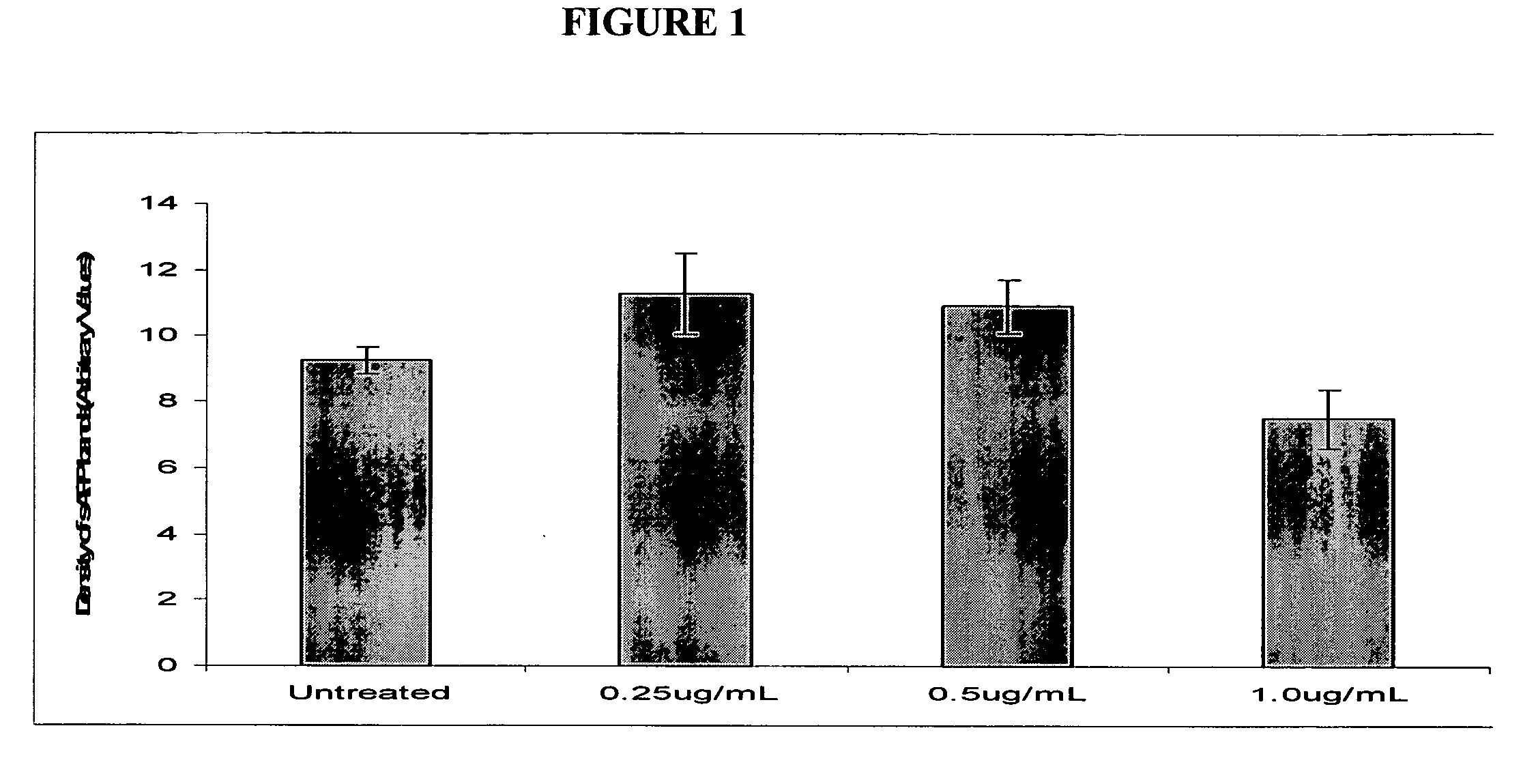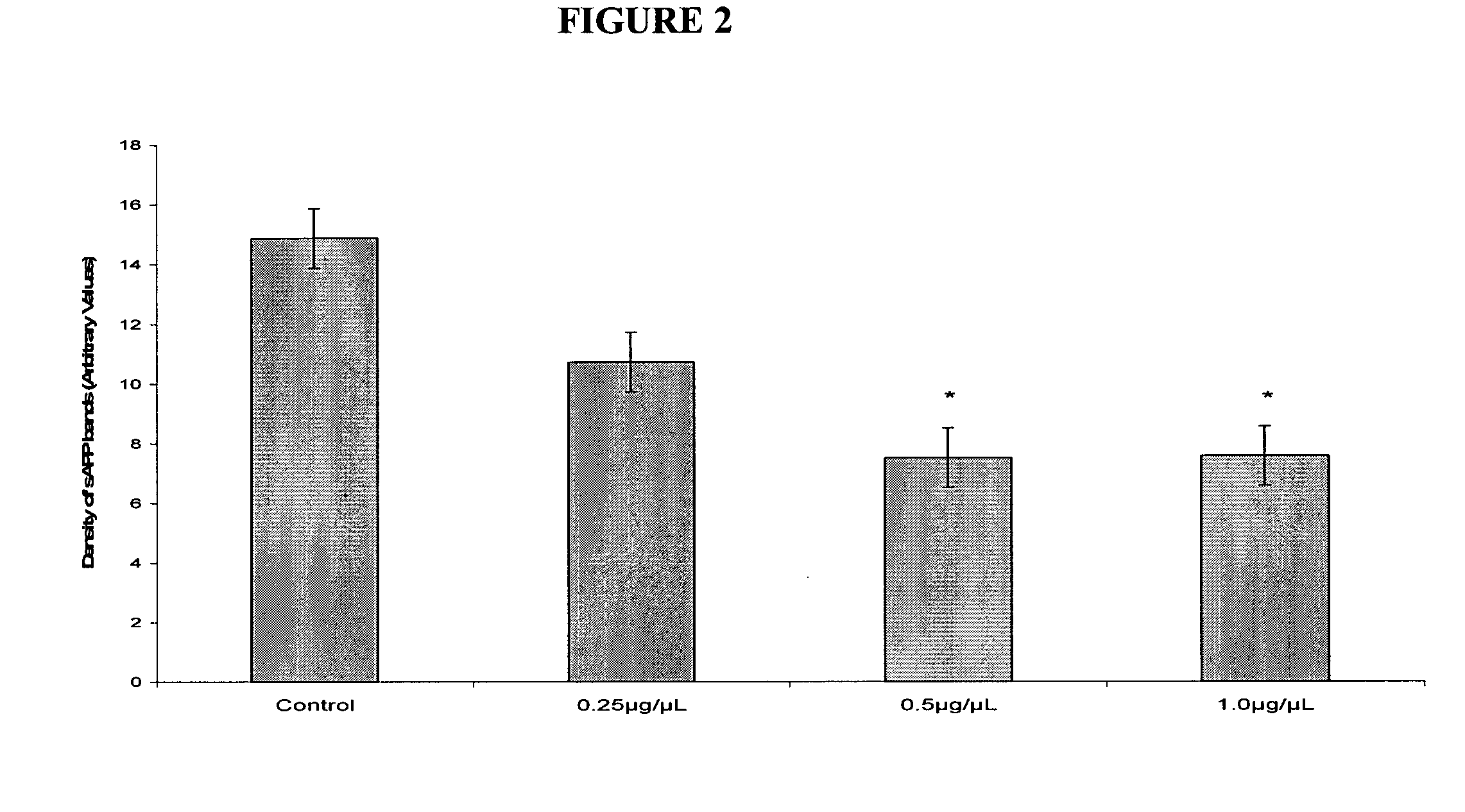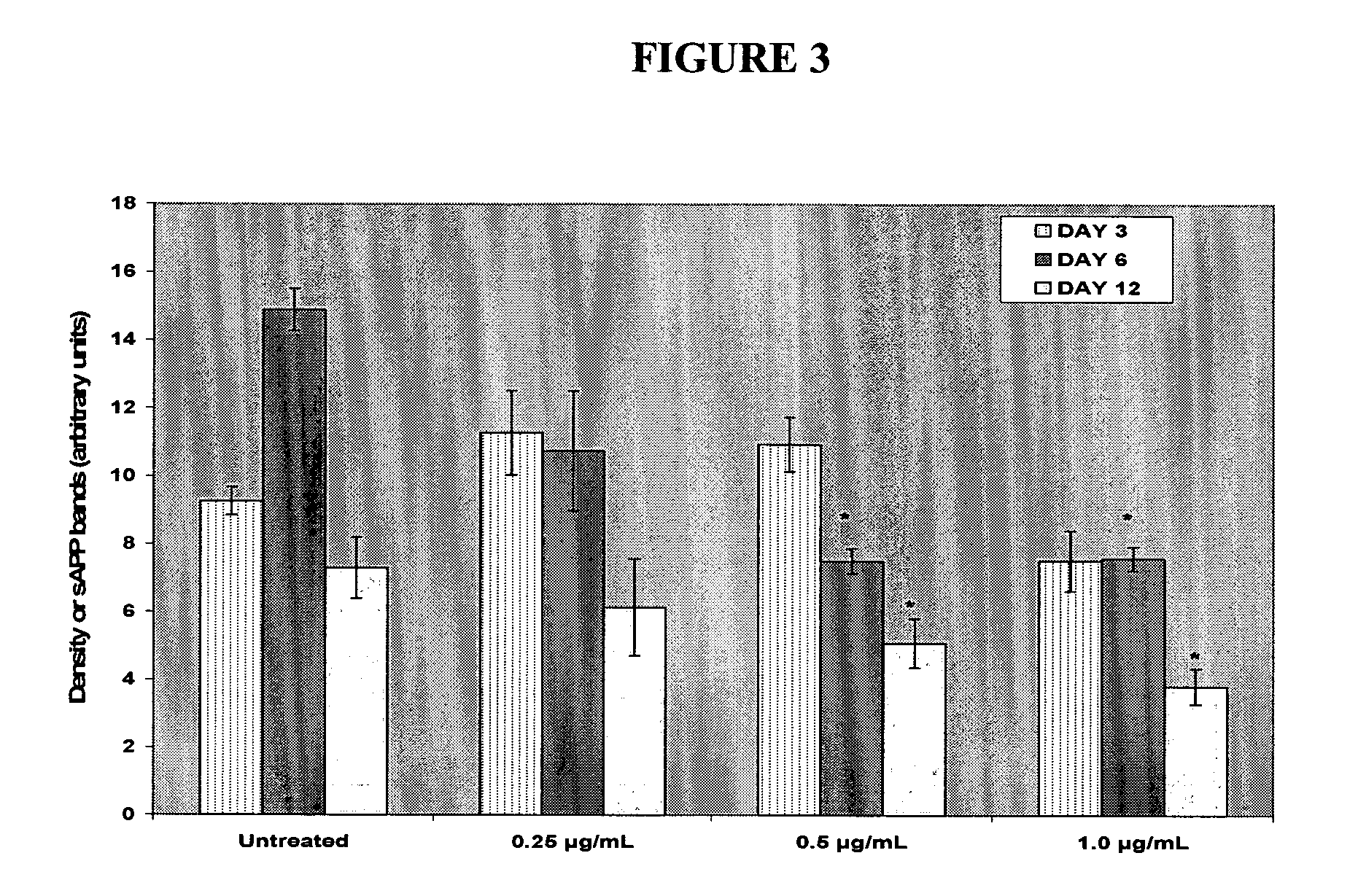Use of 1-aminocyclohexane derivatives to modify deposition of fibrillogenic a-beta peptides in amyloidopathies
a technology of fibrillogenic abeta peptide and amyloidopathy, which is applied in the direction of biocide, drug composition, nervous disorder, etc., can solve the problems of reducing the number of synaptic markers in the target field, unable to effectively prevent ad or reverse the symptoms and course of ad, and unable to achieve the effect of preventing ad or reversing the symptoms and course, so as to reduce the risk of developing an amyloidopathy
- Summary
- Abstract
- Description
- Claims
- Application Information
AI Technical Summary
Benefits of technology
Problems solved by technology
Method used
Image
Examples
example 1
Determination of the Effect of Therapeutic Concentrations of Memantine on the Levels of Secreted APP Derivatives in Human Neuroblastoma Cells
Background
[0291] Memantine is a moderate affinity, uncompetitive (open channel) NMDA receptor antagonist. It exhibits strong voltage-dependent channel blocking characteristics and fast channel blocking / unblocking kinetics. Memantine has been shown to provide neuroprotection and improve learning and memory in several animal models. Clinically, memantine reduces the decline of cognitive function in moderate to severe Alzheimer's disease (AD) patients. (for review see Lahiri et al., Curr. Drug Targets 2003, 4(2): 97-112). Brains of subjects suffering from amyloidopathies such as Alzheimer's Disease (AD), Down's Syndrome, or HCHWA-D, are characterised by the presence of extracellular aggregates of Aβ peptides which are deposited as amyloid fibrils or amorphous aggregates and are thought to play a crucial role in desease pathogenesis. Two major hi...
example 2
Determination of the Effects of Administering Therapeutic Doses of Memantine and Other 1-aminocyclohexane Derivatives on the Levels of Aβ40 and Aβ42 in the Brains of Mouse Models of Alzheimer's Disease
[0304] AD appears to have a heterogeneous etiology with a large percentage termed sporadic AD arising from unknown causes and a smaller fraction of early onset familial AD (FAD) caused by mutations in one of several genes, such as the beta-amyloid precursor protein (APP) and presenilins (PS1, PS2). These proteins along with tau, secretases, such as β-amyloid cleaving enzyme (BACE), and apolipoprotein E play important roles in the pathology of AD (for recent review see Lahiri et al., Curr. Drug Targets, 4:97-112, 2003).
[0305] In some individuals with early-onset AD, the illness may be inherited as an autosomal dominant (i.e., only a single copy of the mutant gene is necessary to cause the disease). Such mutations are identified in at least three different genes: APP, presenilin 1 (PS1...
example 3
Determination of the Effects of Administering Therapeutic Doses of Memantine on Spatial Learning in a Transgenic Mouse Model of Alzheimer's Disease
Background
[0311] In the mammalian brain, NMDA receptors are involved in important physiological functions such as synaptic plasticity and synapse formation, which play important roles in memory, learning and the formation of neural networks during development (Mayer and Westbrook, 1987). Given the critical role of NMDA receptors in learning and memory (Morris, 1989; Tsien et al., 1996), it may appear counter-intuitive that an NMDA receptor antagonist could improve the symptomatology of Alzheimer's disease (AD). Several NMDA receptor antagonists possessing high affinity for NMDA receptors [e.g., (+) MK-801] have been found to cause neurobehavioral adverse effects such as hallucination and cognitive impairment (Benvenga and Spaulding, 1988; Abi-Saab et al., 1998). These adverse events have largely limited the clinical development of high ...
PUM
| Property | Measurement | Unit |
|---|---|---|
| concentrations | aaaaa | aaaaa |
| concentrations | aaaaa | aaaaa |
| concentrations | aaaaa | aaaaa |
Abstract
Description
Claims
Application Information
 Login to View More
Login to View More - R&D
- Intellectual Property
- Life Sciences
- Materials
- Tech Scout
- Unparalleled Data Quality
- Higher Quality Content
- 60% Fewer Hallucinations
Browse by: Latest US Patents, China's latest patents, Technical Efficacy Thesaurus, Application Domain, Technology Topic, Popular Technical Reports.
© 2025 PatSnap. All rights reserved.Legal|Privacy policy|Modern Slavery Act Transparency Statement|Sitemap|About US| Contact US: help@patsnap.com



